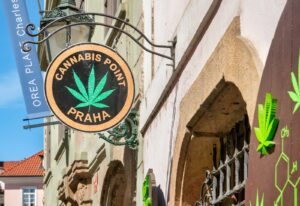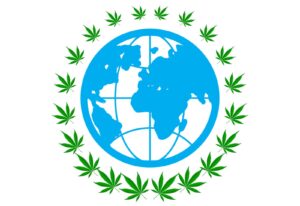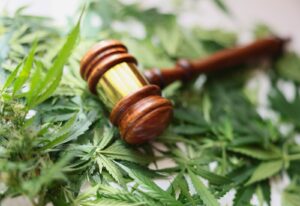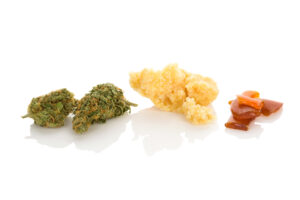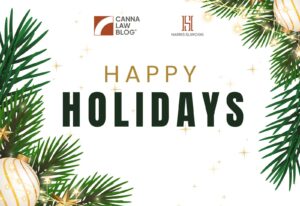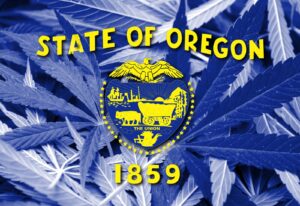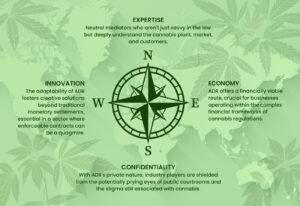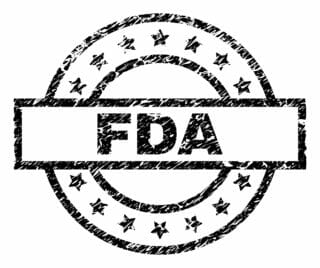
Since the 2014 Farm Bill passed, products containing cannabidiol (“CBD”) derived from hemp (“Hemp-CBD”) have become widely popular and available in a wide range of stores and online. The Food and Drug Administration (“FDA”) has, for the most part, sat on the sidelines. The FDA has occasionally sent out warning letters to Hemp-CBD distributors who made medical claims about their products, but that was it. The days of relative non-enforcement may be over, as the FDA has recently seized Hemp-CBD products.
Why the FDA Does Not Currently View Hemp-CBD as a Dietary Supplement
The 2018 Farm Bill makes it explicit that it does not limit the FDA’s authority to regulate consumer products, and the FDA has made clear that it is focused on Hemp-CBD, making an announcement on Hemp-CBD just moments after the 2018 Farm Bill was signed by Trump. FDA’s jurisdiction over products is triggered by the Food, Drug & Cosmetics Act (“FDCA”).
For the purposes of this post we’ll look at the following categories of products under the FDCA and FDA regulation:
- “Drug” is any article “intended for use in the diagnosis, cure, mitigation, treatment, or prevention of disease in man or other animals” or “intended to affect the structure or any function of the body of man or other animals. In addition, anything intended as a component of a drug is also a drug. 21 USC § 321(g). The FDA’s jurisdiction is triggered by the intended use of an item. The FDA determines intended use generally based on claims made by the distributors of a product, which are often uncovered on labeling, advertising, and other promotional activities related to a product. Drugs are tightly regulated by the FDA and subject to pre-approval before being introduced into interstate commerce.
- “Food” is any “article for use as food or drink for a man.” Unlike drugs, which are determined by intended use, the FDA exerts its jurisdiction over food based on actual use.
- “Dietary supplement” is a product intended to supplement the diet that contains one or more of the following: (a) a vitamin; (b) a mineral; (c) an herb or other botanical; (d) an amino acid; (e) a dietary substance for use by man to supplement the diet by increasing the total dietary intake; or (f) a concentrate, metabolite, constituent, extract, or combination of any ingredient described in clause (a) through (e). 21 U.S.C. § 321(ff).
Hemp-CBD appears to make the most sense as a “dietary supplement.” After all, it is a concentrate of a botanical: hemp. Hemp-CBD could also be food (based on actual use) or drug (based on intended use). The FDA’s warning letters mostly have focused on Hemp-CBD as a drug, but those letters and other statements by the FDA make it clear that the FDA does not believe that Hemp-CBD qualifies as a dietary supplement or food. For today’s post, we’ll focus on the dietary supplement side of things.
Drug Exclusion Rule
There is an exclusion clause in the definition of “dietary supplement” that generally disallows the use of an FDA-approved “drug” as a dietary supplement. We will call this the “Drug Exclusion Rule.” The FDCA’s definition of “dietary supplement” excludes any article that is approved as a new drug or has been subject to a publicized Investigational New Drug (“IND”) clinical investigation, unless the substance was marketed in food or as a dietary supplement before the FDA approved it as a new drug or began the IND investigation. The FDA addresses numerous cannabis-related issues on its “FDA and Marijuana: Questions and Answers” page (“FDA FAQs”). According to the FDA FAQs, products containing CBD cannot be sold as dietary supplements because CBD has been investigated and approved as a new drug, namely Epidiolex.
Though the FDA FAQs is a nonbinding guidance document, it seems to indicate that the Drug Exclusion Rule applies to CBD, because of the approval of Epidiolex and IND investigations of CBD:
The existence of substantial clinical investigations regarding CBD has been made public. For example, two such substantial clinical investigations include GW Pharmaceuticals’ investigations regarding Sativex and Epidiolex. (See Sativex Commences US Phase II/III Clinical Trial in Cancer Pain and GW Pharmaceuticals Receives Investigational New Drug (IND) from FDA for Phase 2/3 Clinical Trial of Epidiolex in the Treatment of Dravet Syndrome ).”
However, to determine whether the Drug Exclusion Rule applies, the FDA also needs to prove that CBD was not marketed as a food or dietary supplement prior to those investigations, which started in 2014.
How the FDA May Regulate Hemp-CBD in the Future
Prior Market Clause
A key component of the Drug Exclusion Rule is that the article at issue was not previously marketed before the article was evaluated or approved by the FDA (the “Prior Market Clause”). So what does it mean to “market” a product? Helpfully, the FDA FAQs link to Draft Guidance for Industry: Dietary Supplements: New Dietary Ingredient Notifications and Related Issues (“NDI Guidance”) to provide an explanation of the phrase “marketed as.”
The NDI Guidance, which like the FDA FAQs is nonbinding, elaborates on the idea of “marketing”:
FDA considers ‘marketing’ a dietary ingredient to mean selling or offering the dietary ingredient for sale (1) as or in a dietary supplement, (2) in bulk as a dietary ingredient for use in dietary supplements, or (3) as an ingredient in a blend or formulation of dietary ingredients for use in dietary supplements. A dietary ingredient may be “marketed” by offering the article for sale online or at a retail establishment, listing it for sale in a catalog or price list, or through advertising or other promotion, if the promotion makes clear that the article is available for purchase. ‘Coming soon’ advertisements would not qualify.”
The NDI Guidance goes on to state “[i]n considering whether a substance has been ‘marketed as a dietary supplement or as a food,’ FDA looks for evidence of one of the following:”
1. Evidence that the substance itself was sold or offered for sale in the U.S. as a dietary supplement, dietary ingredient for use in dietary supplements, or conventional food. For example, a catalog listing a product identified as a ‘Substance A supplement’ would establish the marketing of Substance A as a dietary supplement. Similarly, business records documenting that a substance was sold or offered for wholesale or retail sale for use as an ingredient in a conventional food would establish the marketing of the substance as a food.
2. Evidence that the substance was a component of a food or dietary supplement that was sold or offered for sale in the U.S., and that a manufacturer or distributor of the food or dietary supplement marketed it for the content of the substance by, for example, making claims about the substance or otherwise highlighting its presence in the product. For example, in Pharmanex v. Shalala, the firm marketed lovastatin, a component of its red yeast rice product Cholestin, by promoting the lovastatin content of Cholestin. Merely showing that the substance was present as a component in a marketed food would not be enough to show that the substance was ‘marketed,’ however.”
Red Yeast Rice
The NDI Guidance’s reference to Pharmanex v. Shalala is of note as that case may have a major bearing on Hemp-CBD. Back in April 1997, the FDA issued a warning letter to Pharmanex, stating that it was selling a drug as a dietary supplement. Pharmanex manufactured Cholestin, a dietary supplement derived from red yeast rice intended to promote healthy cholesterol levels. Cholesterin contained the substance mevinolin. Mevinolin was chemically identical to lovastatin, the active ingredient in the prescription drug Mevacor. The FDA approved Mevacor back in 1987. The FDA advised Pharmanex that it considered Cholestin to be a drug that could not be marketed without FDA approval. Pharmanex argued that red yeast rice had been used as a food ingredient for thousands of years. The FDA was not convinced, ultimately holding that Cholestin containing lovastatin did not meet the definition of a “dietary supplement” because lovastatin was an “article” that had already been approved as a drug. The FDA determined that Cholestin did not satisfy the Prior Marketing Clause because it did not contain red yeast rice as that product had traditionally been manufactured and marketed. The FDA ran tests on samples of red yeast rice and found small amounts of lovastatin. In the FDA’s view, Pharmanex had manipulated red yeast rice to increase the lovastatin content and therefore the Drug Exclusion Rule applied.
Pharmanex challenged the FDA’s ruling in district court. The district court set aside the FDA’s decision, agreeing with Pharmanex that the term “article” as used in the FDCA did not refer to a single ingredient in a drug. The Court of Appeals for the Tenth Circuit reversed, holding that the “article” could include the active ingredients of approved new drugs, such as lovastatin, which would exclude them from the dietary supplement definition. On remand, the district court affirmed the FDA’s original conclusion that lovastatin was not marketed as a dietary supplement or food before the FDA approved Mevacor as a prescription drug.
Cholestin-containing lovastatin is no longer on the market in the US. There are still red yeast rice supplements available but the FDA monitors whether those supplements contain more than the naturally occurring amount of lovastatin.
The Future of Hemp-CBD
The Pharmanex case could dictate how the FDA treats Hemp-CBD. Hemp contains many active compounds, including cannabinoids like CBD and terpenes. Hemp can be processed in a number of ways, some of which will isolate these active compounds. Chemical extraction methods can isolate these active compounds while removing water, fiber, and other unwanted material. Alternatively, hemp can be processed without the use of chemicals (e.g., dried flowers; chopped-up plant material placed in pellets, etc.).
“Full spectrum” extracts are the extracts that contain a wide array of compounds found in the hemp plant, including cannabinoids and terpenes. Processors can also isolate specific compounds by repeatedly extracting and refining the compound. Epidiolex is an example of a CBD isolate. A CBD isolate generally contains almost no other compounds. In turn, full-spectrum extracts contain trace amounts of CBD and its compounds.
Following the reasoning in Pharmanex, CBD isolate may be subject to the Drug Exclusion Rule, but processed hemp, including full spectrum extracts, may not due to the Prior Marketing Clause. This is because like Red Yeast Rice, hemp has been consumed as food and medicine for thousands of years. Hemp is not the same as CBD isolate. The Pharmanex case turned on the interpretation of the term “article.” CBD isolate is the article that was approved as a drug. Full spectrum extracts and other processed hemp products that contain naturally occurring CBD also may be outside of the scope of the Drug Exclusion Rule by way of Epidiolex. In turn, CBD isolate or processed hemp that had isolated and increased CBD could only legally be sold as drugs.
Though the parallel between Hemp-CBD and red yeast rice are impossible to ignore, there is no guarantee that the FDA will take the same exact approach. For one, perhaps it can be established that CBD, in its isolated form was marketed prior to the Epidiolex studies being made public. CBD was first discovered by Dr. Roger Adams at the University of Illinois in 1940. However, any marketing of CBD isolate prior to the first Epidiolex investigations in 2014, would have likely violated federal law because the 2014 Farm Bill was not yet in effect, making it illegal under federal law.
However, the FDA’s statement following the 2018 Farm Bill included some very interesting language:
[P]athways remain available for the FDA to consider whether there are circumstances in which certain cannabis-derived compounds might be permitted in a food or dietary supplement. Although such products are generally prohibited to be introduced in interstate commerce, the FDA has authority to issue a regulation allowing the use of a pharmaceutical ingredient in a food or dietary supplement. We are taking new steps to evaluate whether we should pursue such a process.”
The FDA Secretary can override the Drug Exclusion Rule by issuing “a regulation, after notice and comment, finding that the article would be lawful under [the FDCA].” The statement also went on to ask for input on the future of Hemp-CBD:
Given the substantial public interest in this topic and the clear interest of Congress in fostering the development of appropriate hemp products, we intend to hold a public meeting in the near future for stakeholders to share their experiences and challenges with these products, including information and views related to the safety of such products.”
We will continue to monitor the FDA for additional updates on Hemp-CBD.














